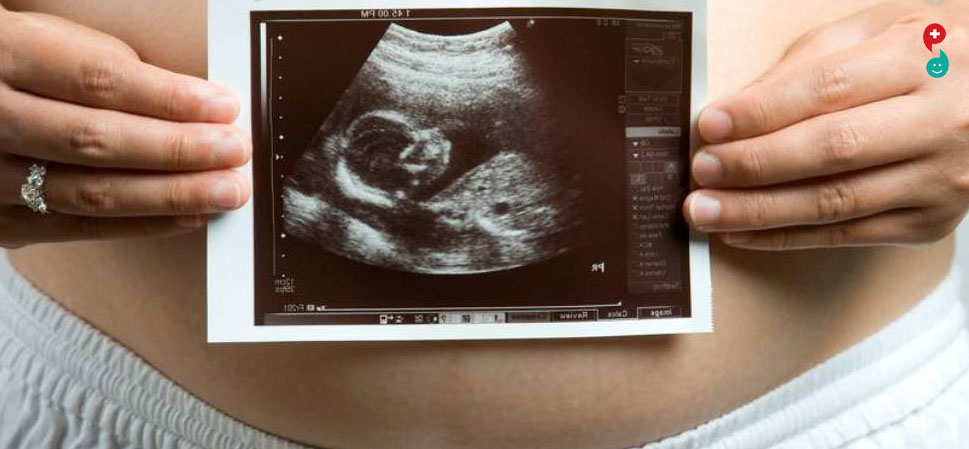Percutaneous umbilical blood sampling (PUBS)
Percutaneous umbilical blood sampling (PUBS) is a diagnostic procedure that examines the blood of the fetus for abnormalities. The test also goes by the names cordocentesis, fetal blood sampling, umbilical vein sampling, and percutaneous umbilical vein sampling (PUVS).Doctors must be specially trained to perform the highly complex procedure, so it may not be available at all pregnancy centers.
When is the test done?
This procedure is usually performed when diagnostic information can't be gathered via other tests -- amniocentesis, chorionic villus sampling (CVS), or ultrasound -- or the results of these tests were inconclusive. It may also be used late in pregnancy if the mother has been exposed to a disease that could harm the baby or when an ultrasound has found a fetal abnormality.PUBS can be done as early as your 18th week of pregnancy; before then the umbilical vein is too fragile for the procedure. But it's more commonly used later in pregnancy.The main advantage of this test is that it's quick. Your doctor may recommend it over amnio or CVS if she wants to check your baby for a chromosomal defect or blood disorder and needs to know the results fast. It may take a few weeks to get the results of amniocentesis, whereas PUBS can provide an answer in a few days. For someone at 20 weeks who is contemplating ending the pregnancy based on a finding of abnormalities, the test may be worth it.
What's the procedure like?
You'll lie on an examination table while a practitioner cleanses your abdomen with antiseptic and then conducts an advanced ultrasound to determine the exact spot where the umbilical cord emerges from the placenta. Then, under continual guidance from ultrasound, the healthcare provider inserts a thin needle through your abdomen and the walls of your uterus into the umbilical cord to retrieve a small sample of fetal blood. The test is similar to amniocentesis except that the goal in this case is to collect blood from your developing baby, instead of the amniotic fluid that surrounds him.The sample is sent to a laboratory for analysis. Results are usually available within 48 to 72 hours.
Your doctor will advise you regarding how long you should rest after the procedure and whether there are any physical restrictions following the test. She will also assess your baby's heart rate through electronic monitoring immediately following the test to check on your baby's well-being.
What can the test uncover?
PUBS can detect chromosomal abnormalities such as Down syndrome, blood disorders such as sickle cell anemia, hemophilia, and Rh disease, as well as fetal infections such as rubella and toxoplasmosis. The test does not, however, determine the severity of these conditions.
In addition, it's the only test that can confirm fetal anemia. This diagnosis can be made immediately. If necessary, fetal transfusions can begin while the needle for the procedure is still in place.
Unlike amniocentesis, this test cannot detect neural tube defects such as spina bifida.
Are there any risks with this procedure?
As with amniocentesis, fetal blood sampling is considered a relatively safe procedure. At the same time, it is an invasive diagnostic test that poses risks. Miscarriage is the main concern: One or two out of every 100 fetal blood sampling procedures results in a miscarriage, which is higher than the risk of miscarriage associated with amniocentesis or chorionic villus sampling.Other potential side effects include blood loss from the puncture site, infection, a drop in fetal heart rate, or premature rupture of the amniotic sac surrounding the baby. If you experience fever, chills, or leaking amniotic fluid, contact your health practitioner right away.
Should I have this test?
-This is not a routine test, and doctors generally offer it only when they believe there is a good reason to perform it. But whether or not to test is a personal decision that you will make after gathering information about risks, benefits, and other considerations from your healthcare providers, genetic counselors, and/or spiritual advisors.
-Confirming a suspected diagnosis may offer you and your partner an opportunity to pursue medical interventions that may help your unborn child -- even before he is born. The results may also help you begin planning for a child with special needs, including finding support groups and resources. The outcome can also help you make a decision about whether or not to carry the fetus to term.
-Some expectant parents may decide not to have this procedure for personal or religious reasons. They may decline because of the potential harm it can pose to their developing baby, because they prefer to use amniocentesis, or because the outcome of the test would not change their decision about whether or not they would have the child. Remember: The choice is yours to make.
What is a Cordocentesis Test?
Cordocentesis test is a prenatal diagnostic test done in some pregnant women, if advised by doctors. It is also known as PUBS or percutaneous umbilical cord blood sampling. When doctors suspects that the fetus growing inside the womb might be suffering from any kind of blood disorder, blood infection or genetic abnormality, cordocentesis test is performed to confirm the same. Sickle cell anemia, cleft palate, Down's syndrome are some of common fetal abnormalities which can be detected with a cordocentesis test.
Cordocentesis test is a type of invasive procedure wherein blood is taken from the fetus's umbilical cord and analyzed in detail. Such a test is generally performed between 18 to 24 weeks of gestation as by this time the umbilical cord, which is the link between the infant and the mother, gets fully developed. Also, it is the umbilical cord itself which passes on all the nutrition from the mother to the fetus at all times.
How is Cordocentesis Test Performed?
After learning what a cordocentesis test is, we should also learn how it is performed. In order to perform this test, the surgeon first advises the pregnant woman to lie down on her back. The abdominal area is cleaned and a needle is inserted into the umbilical cord. An ultrasound guides this process through the abdomen to avoid any mistakes. The surgeon collects blood in the syringe attached to the inserted needle once the needle has reached the umbilical cord. The collected blood is sent to the laboratory for a detailed analysis or as instructed by the surgeon.
Cordocentesis is used as an effective prenatal diagnostic technique. Also, it is useful in delivering medicine to the fetus if need be and performing blood transfusion for the fetus while in the mother's womb.
Risks Involved in Cordocentesis Test
However, since a cordocentesis test is an invasive one, it runs a higher risk than a non-invasive technique as there are certain complications which have been associated with such a test. These would include bleeding in the fetus, slowing of the fetal heart rate, hematoma in the umbilical cord, bleeding in to-be-mother, infection in fetus or uterus, miscarriage or premature rupture of the membrane.
When is Cordocentesis Performed?
Cordocentesis test is performed when the doctor suspects that there is something wrong with the fetus in the prenatal ultrasound test. If during prenatal checks, the doctors find that the possibility of some genetic condition in the fetus, infection or some disorder then they may perform a cordocentesis test. Along with the above mentioned genetic disorders, Cordocentesis test is performed to detect infections such as rubella and toxoplasmosis.
A cordocentesis test is performed to detect serious genetic defects or anomaly, the risk of serious issues to the baby can be assessed. As this test is performed during initial weeks, the pregnant lady and her partner can decide about aborting the fetus in accordance with the medical advice and reports of cordocentesis test.
Another circumstance where a cordocentesis test is performed is when the fetus needs to be provided with certain medications through the umbilical cord or needs a blood transfusion via the same cord.
A cordocentesis test, for such reasons, can be performed up to 24 weeks of pregnancy, when the risk of complication is less. However, after 24 weeks of pregnancy, a cordocentesis test is performed only in a hospital's operation theatre as the risk increases tremendously. In some cases, an urgent cesarean section may have to be performed to deliver the baby without delay.
Conclusion
With great advancement in the world of medicine, cordocentesis test has taken a back seat mainly due to the complications it may give rise to. Amniocentesis and Chorionic Villi Biopsy are some other less risky and safer methods which also help detect an array of abnormalities in the fetus without harming it in any way. However, cordocentesis test is performed when the other types of tests are unable to provide proper diagnosis for the abnormality or disorder in the fetus.
कॉर्डोसेनेसिस चाचणी म्हणजे काय?
कॉर्डोसेनेसिस चाचणी ही काही गर्भवती महिलांमधील डॉक्टरांनी सल्ला दिल्यास जन्मपूर्व निदान चाचणी आहे. याला पीयुबीएस किंवा पर्कटायन्स नंबिकल कॉर्ड रक्त सॅम्पलिंग म्हणूनही ओळखले जाते. जेव्हा डॉक्टरांना असे वाटते की गर्भाशयात वाढणारे गर्भ कोणत्याही प्रकारचे रक्त विकार, रक्त संक्रमण किंवा आनुवंशिक असामान्यता ग्रस्त असेल तर कॉर्डोसेनेसिस चाचणी ही पुष्टी करण्यासाठी केली जाते. सिकल सेल अॅनिमिया, क्लेफ्ट टॅलेट, डाऊन सिंड्रोम ही काही सामान्य गर्भाची असामान्यता असून ती कॉर्डोसेनेसिस चाचणीसह शोधली जाऊ शकते.
कॉर्डोसेनेसिस चाचणी ही एक प्रकारचा आक्रमक प्रक्रिया आहे ज्यामध्ये रक्त गर्भाशयाच्या गर्भाशयातून घेतले जाते आणि तपशीलवार विश्लेषण केले जाते. अशा प्रकारचे परीक्षण सामान्यत: गर्भधारणेच्या 18 ते 24 आठवड्यांदरम्यान केले जाते कारण यावेळेस नवजात कॉर्ड, जो बाळ व माता यांच्यातील दुवा आहे, पूर्णपणे विकसित होतो. तसेच, हे नाभीय कॉर्ड देखील असते जे नेहमीच आईच्या सर्व पोषणांवर गर्भपातावर जाते.
कॉर्डोसेनेसिस चाचणी कशी केली जाते?
कॉर्डोसेनेसिस चाचणी काय आहे हे जाणून घेतल्यानंतर, ते कसे केले जाते ते शिकले पाहिजे. हे चाचणी करण्यासाठी, सर्जन प्रथम गर्भवती स्त्रीला तिच्या मागे झोपायला सांगते. उदर क्षेत्र स्वच्छ केले जाते आणि नाभीय कोर्डमध्ये सुई घातली जाते. अल्ट्रासाऊंड कोणत्याही चुका टाळण्यासाठी उदरमार्गे ही प्रक्रिया मार्गदर्शित करते. सुई नाम्बिक कॉर्डवर पोहोचल्यानंतर सर्जन आत घाललेल्या सुईला जोडलेल्या सिरिंजमध्ये रक्त गोळा करते. गोळा केलेले रक्त प्रयोगशाळेकडे विस्तृत विश्लेषण किंवा सर्जनद्वारे निर्देशित करण्यासाठी पाठविण्यात आले आहे.
कॉर्डोसेनेसिसचा प्रभावी जन्मपूर्व निदान तंत्र म्हणून वापर केला जातो. तसेच, आईच्या गर्भाशयात असताना गर्भाच्या रक्तसंक्रमणाची आवश्यकता असल्यास गर्भावर औषध वितरीत करण्यात उपयुक्त ठरते.
कॉर्डोसेनेसिस चाचणीमध्ये समाविष्ट असलेले धोके :
तथापि, कॉर्डोसेनेसिस चाचणी एक आक्रमक आहे म्हणून, तो एक गैर-आक्रमक तंत्रापेक्षा जास्त जोखीम चालवितो कारण अशा प्रकारच्या चाचणीशी संबंधित काही जटिल समस्या आहेत. यामध्ये गर्भाशयात रक्तस्त्राव, गर्भाच्या हृदयाचे प्रमाण कमी होणे, गर्भाशयाच्या गर्भाशयात हॅमेटोमा, आई-मातेमध्ये रक्त येणे, भ्रूण किंवा गर्भाशयात संसर्ग, गर्भपात होणे यांचा समावेश असेल.
कॉर्डोसेनेसिस कधी केले जाते?
जन्मपूर्व अल्ट्रासाऊंड चाचणीमध्ये गर्भाशी काही चुकीचे असल्यास डॉक्टरांना संशय येतो तेव्हा कॉर्डोसेनेसिस चाचणी केली जाते. जन्मपूर्व तपासणीदरम्यान, डॉक्टरांना गर्भ, संसर्ग किंवा काही विकारांमधील काही अनुवांशिक स्थितीची शक्यता आढळल्यास ते कॉर्डोसेनेसिस चाचणी करू शकतात. उपरोक्त अनुवांशिक विकारांसह, रूबेला आणि टोक्सोप्लाज्मॉसिससारख्या संक्रमणांचा शोध घेण्यासाठी कॉर्डोसेनेसिस चाचणी केली जाते.
गंभीर आनुवांशिक दोष किंवा विसंगती शोधण्यासाठी कॉर्डोसेनेसिस चाचणी केली जाते, बाळाला गंभीर समस्यांचे जोखमीचे मूल्यांकन केले जाऊ शकते. सुरुवातीच्या आठवड्यांमध्ये ही चाचणी केली जाते, गर्भवती महिला आणि तिचा पार्टनर वैद्यकीय सल्ला आणि कॉर्डोसेनेसिस चाचणीच्या अहवालानुसार गर्भ थांबविण्याचा निर्णय घेऊ शकतात.
आणखी एक परिस्थिती जेथे कॉर्डोसेनेसिस चाचणी केली जाते तेव्हा जेव्हा गर्भाला कोळशाच्या कॉर्डद्वारे काही औषधे पुरविण्याची आवश्यकता असते किंवा त्याच कॉर्डद्वारे रक्तसंक्रमण आवश्यक असते.
कॉर्डोसेनेसिस चाचणी, अशा कारणास्तव, गर्भावस्थेच्या 24 आठवड्यांपर्यंत चालविली जाऊ शकते, जेव्हा जटिलतेचा धोका कमी असतो. तथापि, 24 आठवड्यांच्या गर्भधारणा नंतर कॉर्डोसेनेसिस चाचणी केवळ हॉस्पिटलच्या ऑपरेशन थियेटरमध्ये केली जाते कारण जोखीम मोठ्या प्रमाणात वाढते. काही प्रकरणांमध्ये, विलंब न करता बाळांना वितरित करण्यासाठी तात्काळ सेझरियन सेक्शन लागू करणे आवश्यक आहे.
निष्कर्ष :
औषधांच्या विश्वात मोठ्या प्रगतीसह, कॉर्डोसेनेसिस चाचणीने मुख्यत: मागे घेण्याची जागा घेतली आहे कारण मुख्यत्त्वे ही गुंतागुंत यामुळे उद्भवू शकते. अमिनिओसेनेसिस आणि कोरियोनिक विली बायोप्सी काही कमी धोकादायक आणि सुरक्षित पद्धती आहेत ज्यायोगे गर्भाच्या कोणत्याही प्रकारचे नुकसान न करता गर्भपाताच्या असामान्यतेचा शोध घेण्यास मदत होते. तथापि, कॉर्डोसेनेसिस चाचणी केली जाते जेव्हा इतर प्रकारच्या चाचण्या गर्भपातातील असामान्यता किंवा डिसऑर्डरसाठी योग्य निदान प्रदान करण्यात अक्षम असतात.











